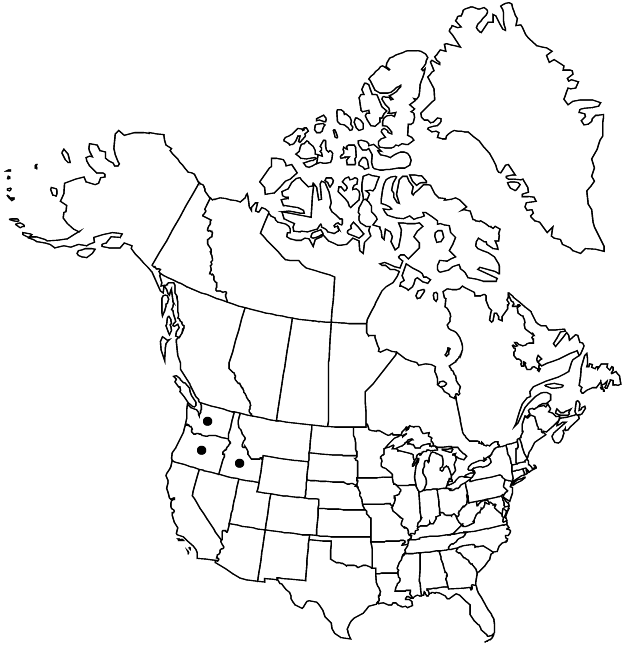Difference between revisions of "Sedum leibergii"
in N. L. Britton et al., N. Amer. Fl. 22: 73. 1905,.
FNA>Volume Importer |
FNA>Volume Importer |
(No difference)
| |
Revision as of 20:29, 24 September 2019
Herbs, biennial, erect, glabrous. Stems rootstocks, horizontal, simple, bearing basal rosettes (axillary shoots with subterranean, white stems that detach easily and bear terminal rosettes of colorless leaves). Leaves alternate, spreading, outermost ones petiolate (petiole 4–5 mm); blade green or greenish white, not glaucous, oblanceolate, obovate, or narrowly spatulate, laminar, 2–16 × 1.4–3.2 mm, base not spurred, not scarious, apex blunt, (surfaces papillose). Flowering shoots erect, simple, (5–)11(–18) cm; leaf blades ovate or elliptic, base not spurred; offsets not formed. Inflorescences cymes, 5–60-flowered, 3–6-branched; branches often strongly recurved, each 1 or 2 times dichotomously forked; bracts similar to leaves, smaller. Pedicels to 0.3 mm. Flowers (5–)6(–7)-merous; sepals erect, slightly connate basally, green, ovate, equal, 1.5–2 × 0.7–1.1 mm, apex acute; petals spreading, distinct nearly to base, canary yellow, keel green or dark red, lanceolate to oblong, carinate, 4–6 mm, apex subobtuse to acute; filaments yellow; anthers yellow; nectar scales deep yellow, subquadrate. Carpels stellately spreading in fruit, connate basally, brown. 2n = 16.
Phenology: Flowering spring–summer.
Habitat: Open or largely bare areas, basalt or limestone, rocky hillsides, cliffs
Elevation: 50-1200 m
Distribution

Idaho, Oreg., Wash.
Discussion
Variation in the number of floral parts of Sedum leibergii (5–7-merous) is unique in North American sedums. It has tiny rosettes of lax, long-spatulate basal leaves that mostly have shriveled by anthesis. Sedum borschii, which is often confused with S. leibergii, has primary rosettes, prominent at anthesis, that have obovate or elliptic leaves.
Selected References
None.